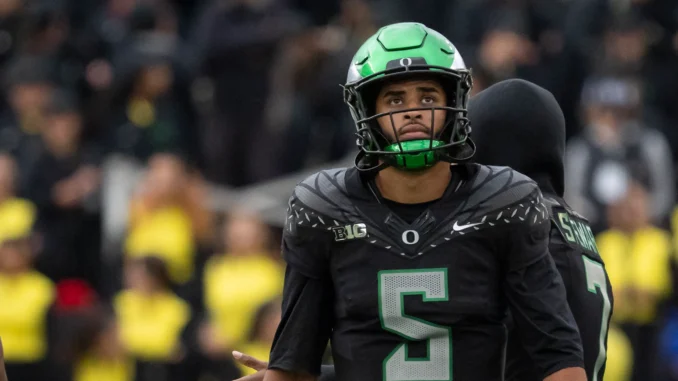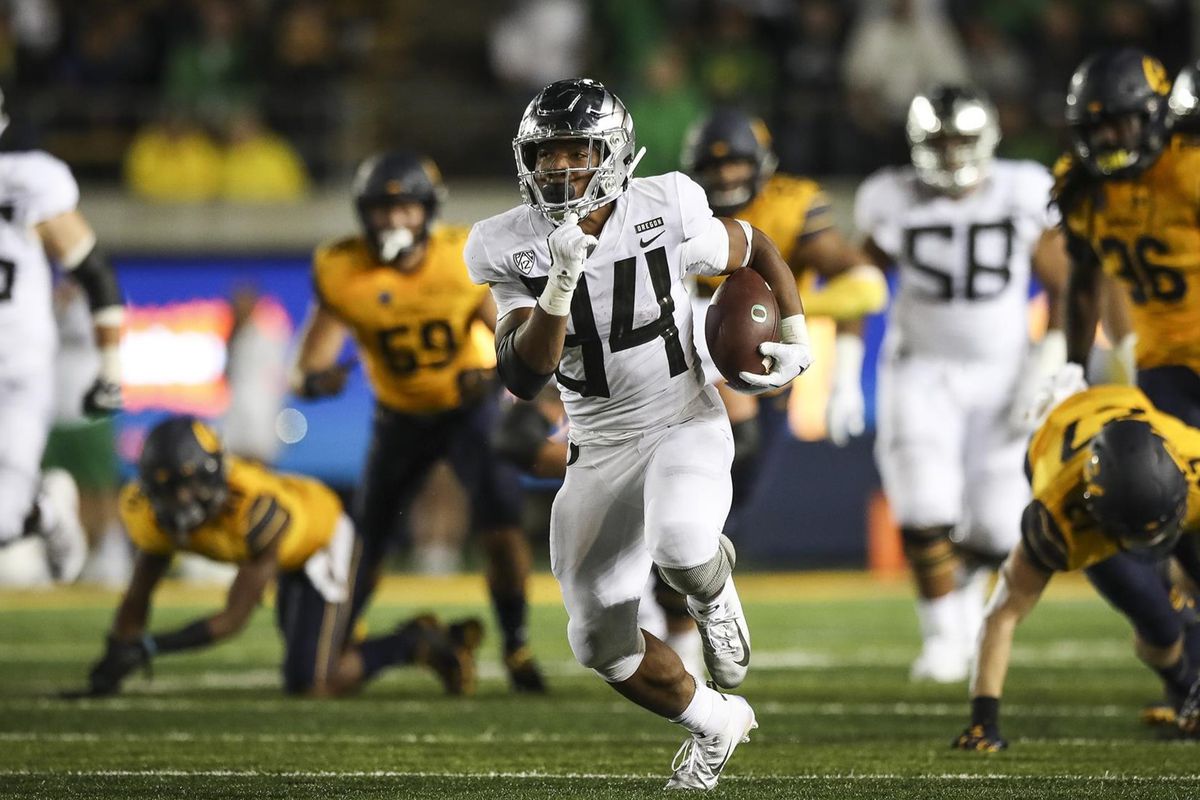
The confetti from Oregon’s triumphant road win over Penn State had barely settled when the No. 3 Ducks welcomed No. 7 Indiana to Autzen Stadium on Saturday. What followed was a sobering reality check: a 30-20 upset loss that snapped Oregon’s 18-game home winning streak (the longest in the nation) and exposed cracks in a team that had looked untouchable. As fans filed out early in the fourth quarter, the high-flying Ducks offense sputtered, the defense bent in the second half, and head coach Dan Lanning was left admitting, “They played a better game than us. They were better coached than us.”
This wasn’t just a loss; it was a dismantling. Indiana (6-0, 3-0 Big Ten) outgained Oregon 326-267, dominated time of possession, and turned Autzen’s electric atmosphere into a ghost town. For a program with “double down” as its mantra (aiming to repeat as Big Ten champs and chase a national title), the defeat raises urgent questions. What exactly went wrong? What does it mean for Oregon’s standing in the conference and the expanded 12-team College Football Playoff? And what key takeaways can salvage the season?
What Went Wrong: A Perfect Storm of Offensive Woes and Defensive Lapses
Oregon’s offense, which had averaged over 40 points per game entering the matchup, managed just one touchdown and 267 total yards (its lowest output of the season). Quarterback Dante Moore, fresh off a Heisman-caliber performance against Penn State, looked mortal for the first time. He completed 21 of 34 passes for 186 yards, one TD, and two fourth-quarter interceptions that sealed the Ducks’ fate. “In all phases, it was not great,” Moore admitted postgame. “I feel like we beat ourselves when it came to penalties and me missing simple reads.”
The protection issues were glaring. Indiana’s defensive front sacked Moore six times (five more than he’d endured all season prior), disrupting rhythm and forcing hurried throws. As Lanning noted, “We struggled to protect the quarterback… We had a hard time generating success.” The run game, expected to exploit Indiana’s smaller defensive line, fizzled outside of true freshman Jordon Davison’s 59 yards on eight carries. Star backs like Dierre Hill (-3 yards on three rushes) and Noah Whittington were neutralized, with Oregon totaling just 81 rushing yards. Screens and edge runs, staples of offensive coordinator Will Stein’s scheme, were repeatedly stuffed. “They had hats in a loaded box,” Lanning said, crediting Indiana’s adjustments.
Penalties compounded the mess: Oregon racked up 7 for 64 yards, including false starts and holding penalties that killed drives. The Ducks converted just 4 of 13 third downs and managed only 64 yards in the second half. From Indiana’s side, three key stats tell the tale: They held Oregon to 3.5 yards per rush, forced two turnovers, and won the time-of-possession battle 35:05 to 24:55. Hoosiers QB Fernando Mendoza (215 yards, one TD) and RB Roman Hemby (two TDs) exploited Oregon’s secondary, with Elijah Sarratt hauling in 113 receiving yards.
Defensively, Oregon started strong but crumbled after halftime, allowing Indiana to score on four of five second-half possessions. Linebacker Bryce Boettcher led with 11 tackles, but missed assignments let Mendoza scramble for key conversions. True freshman DB Brandon Finney’s pick-six tied it at 20-20 early in the fourth, providing a brief spark, but it wasn’t enough. As columnist John Canzano put it, “Indiana won the line of scrimmage on offense, bullied the Ducks on defense, and danced off with the key to the Big Ten Conference penthouse.”
Coaching was another culprit. Lanning owned it: “I don’t think our plan was great… Starts with me.” Indiana’s Curt Cignetti outschemed the Ducks at every level, making halftime adjustments that Oregon couldn’t counter. “They made better adjustments in the second half than we did,” Lanning said. It echoed past big-game shortcomings for Oregon, like last year’s playoff rust after a Big Ten title bye.
What This Means for the Big Ten and College Football Playoff
In the Big Ten, this loss puts Oregon (5-1, 2-1) in a precarious spot. Undefeated Ohio State and Indiana now hold the inside track to the conference title game in Indianapolis. With tiebreakers likely favoring the Hoosiers if both finish 11-1, Oregon’s “double down” mantra feels distant. Missing the title game isn’t catastrophic (last year’s Ohio State lost twice, skipped the Big Ten championship, and still won the national title), but it means no first-round CFP bye.
For the playoff, the season isn’t over, as Lanning emphasized: “Every one of our goals is still in front of us.” In the 12-team era, a one-loss Oregon could finish 11-1 with winnable games against Rutgers, Michigan, and others. That record, bolstered by a strong strength of schedule, should secure a playoff berth (likely as a 5-8 seed, hosting a first-round game).
Key Takeaways: Lessons Learned and Silver Linings
- Adversity Builds Champions: This could be the wake-up call Oregon needs. As Moore said: “Nobody’s perfect… You’ve got to see how you bounce back.” Lanning’s message: “It’s about improvement. It’s about going to attack.”
- Emerging Stars Shine: Amid the gloom, Finney’s pick-six highlighted his potential as a lockdown DB (one of the lowest catch rates in FBS). Davison’s “hot hand” (59 yards) suggests depth at RB, rotating with Hill and others. Boettcher’s near-career-high tackles show defensive grit.
- No Moral Victories, But Perspective Matters: Oregon was out-physicaled and out-coached. But if they can avoid self-doubt, fix the penalties (uncharacteristic this year), and lean on the run game more, they can be right back in the championship conversation.
Oregon resets against Rutgers next week. If they channel this loss into fuel, the Ducks could still soar.



